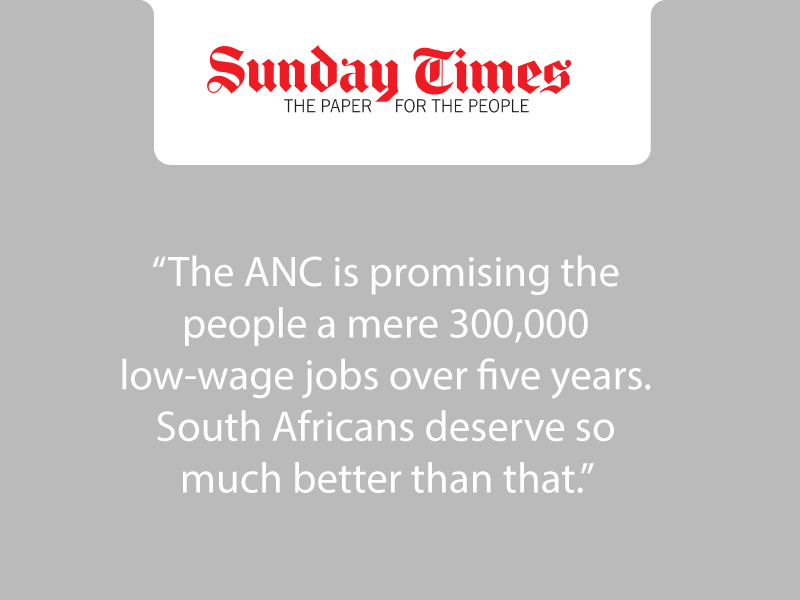
WHAT do immigrants do in SA? For a lot of people, there is an easy answer. They flood across our borders in huge and unmanageable numbers. When they get to the cities and towns, they beg on street corners, commit crimes and take jobs away from local people.
In-depth research paints a very different picture. Large sample surveys of households and lengthy interviews with hundreds of migrants in the midsized mining and industrial town of Witbank, and more recently in metropolitan Johannesburg, have shown that most immigrants are hardworking, self-reliant, entrepreneurial and productive residents.signed and analysed by Prof Lawrence Schlemmer.
Also there are significantly fewer immigrants than is often imagined. In 2006 there were about 6200 foreign-born people in Witbank, which was about 3% of the town’s population. Like most big cities, Johannesburg is a magnet for immigrants. There were about 550000 foreign-born people in Johannesburg in 2006, which was about 13%-14% of the city’s population of almost 3,9-million.
These numbers are revealing. The pattern of migrant settlement is very uneven across the country, which makes generalisation difficult. Johannesburg — probably the national magnet destination for migrants — has significant foreign numbers, but they are a long way from the hugely inflated guesstimates that do the rounds in official circles and everyday conversation.
Effective management of migration requires reliable information. The numbers will never be perfect, but this does not mean that we should tolerate the wild guesses that currently distort public discourse on migration. Careful estimates based on genuine fieldwork are vital and orders of magnitude are possible.
The country needs to generate reliable information on migration and communicate it effectively. This includes not only estimates of numbers but also information about migrants’ various statuses (students, refugees, asylum seekers, skilled immigrants, retirees, irregular immigrants), where they are located, the economic roles they play (cross-border trader, entrepreneur, professional, construction labourer), the conditions of their stay, and the rules concerning access to state
facilities.
People in responsible positions should stop parroting unsupported numbers about the immigrant influx and indulging in handwringing about the allegedly vast scale of immigration. All the available evidence indicates it is a manageable number if the process is handled effectively.
The profiles constructed from our interviews suggest that immigrants tend to be law-abiding, migration law sometimes excepted. The two most senior police officials in Witbank emphasised that they had no evidence that immigrants were any more inclined to commit crimes than locals. In fact, it was their impression that most immigrants were actually less crime-prone than South Africans.
The majority of foreign-born people speak English and often major local African languages fluently or very well. In both Witbank and Johannesburg, their most typical level of education was incomplete high school — but this education is often of a higher standard than local schooling. And many foreigners often have economically useful experience-based skills.
Immigrants do well in the markets for labour and services. The main immigrant occupations in Johannesburg were trading, shop-keeping, domestic work, security, gardening and other service work, unskilled and semiskilled heavy labour, semiskilled and skilled artisan trades. In Witbank, the principal immigrant occupations were trading and shop-keeping, followed by making goods for sale, artisanal work, construction work, and working as industrial machinery operators or drivers.
Foreign-born people are significantly less likely to be out of work than locals. The unemployment rate among immigrants in Johannesburg was 20%, a lot lower than the national rate at the time of the survey (2006) — 25,5% of those still looking for work; 37% if we include those who have given up looking. In Witbank, 16% of immigrants were unemployed, a low figure in the South African context.
The number of immigrants involved in entrepreneurial activities is also impressive, especially as SA is consistently below international averages on measures of entrepreneurship. Forty-four percent of Johannesburg-based immigrants were self-employed, as were 32% of immigrants in Witbank.
A striking fact emerging from the Johannesburg survey was that immigrants in the city employed a lot of locals. On average, one in every four immigrants hires a South African employee. On top of this, a significant number of jobs in retail and services are likely to depend indirectly on the presence of foreign-born people, especially those involved in the sizable business of cross-border trade.
These positive attributes win grudging approval from locals. In addition to expressing a good deal of antiforeigner sentiment, many of the South Africans interviewed perceived foreigners as offering real value for money as employees and good trading partners. Foreigners were also generally seen as self-sufficient, co-operative, trouble-free workers. Two-thirds of local government officials interviewed in Johannesburg characterised foreigners as hardworking, determined and productive. Seventy-six percent of business organisation representatives interviewed agreed that foreigners add value to the local economy and were concerned that many local workers were pricing themselves out of the market for their skills.
What about the issue of taking jobs away from South Africans? About a third of immigrants in Johannesburg and as many as 42% of immigrants in Witbank did have jobs that might in theory have been occupied by local people. But it is simplistic to see this as “foreigners stealing jobs”. These jobs are often low-paid and physically demanding. Despite our extraordinarily high rate of unemployment, many local people do not seem to want this kind of work whereas foreigners gratefully seize it as an opportunity. This raises important questions about SA’s labour market rules, about how unemployed South Africans get their income, and about many unemployed South Africans’ attitudes and expectations. None of this would be resolved if there were no immigrants working in the city.
At the time of the surveys, a remarkable 90% of immigrants in Witbank felt good about the way they were treated. The city-slicker immigrants of Johannesburg were slightly less positive, but nearly 75% of foreigners in Johannesburg felt either happy or very happy in the city. In Witbank, 65% of immigrants felt they were now fully accepted as South Africans; in Johannesburg the equivalent figure was 56%.
A close look at immigrants in Johannesburg and Witbank shows that SA is not facing a tidal wave of freeloaders and criminals. Neither popular panic nor government passivity in face of “the inevitable” is justified. A far better image for understanding immigration would be a strong, steady stream.
Continuing and probably increased immigration is inevitable. SA has long and porous borders. Economic growth and increased trade with our neighbours will cause more immigration to SA, as will continued conflict and poverty on the continent. The good news is that most immigrants make a positive contribution to the South African economy and enrich our society, sometimes against daunting odds. As a country, we need to understand this contribution much better, learn how to manage migration effectively, and capitalise on its many positive dimensions.
- Ann Bernstein is director of the Centre for Development and Enterprise. Simon Dagut is senior research manager. This article is based on two CDE publications dealing with surveys in Witbank and Johannesburg, where the research was de




